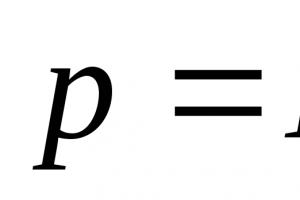Features of ventilation of a country house and cottage
Ventilation in a country house and cottage is as necessary as sewerage or heating, because without proper air exchange, even the most reliable room will quickly become unusable. If the exhaust air is not removed and is not replaced by an influx of fresh air, then mold, mildew, dampness, and an unpleasant odor will appear in the country house or cottage. All this will negatively affect the condition of the residents and the house itself.
Therefore, even at the design stage, you need to carefully consider the main nuances of ventilation in the house: how fresh air will enter the room, in which rooms it is better to install ventilation grilles to remove exhaust air, whether a supply and exhaust system will be needed or can be done in simpler ways, and many other questions .
Standards and requirements for ventilation in a cottage and country house
Ventilation standards in a country house according to SP 55.13330.2011 “Single-apartment residential houses” are as follows:
- At least 60 cubic meters should be removed from the kitchen per hour. m air;
- from the toilet and bathroom - 25 cubic meters;
- in all other rooms - no less than 20% of the total volume of the room in 1 hour.
More information about air exchange rates in other rooms can be found in the table below.
L = n * V (m 3 / hour), Where
n- standardized air exchange rate;
V- volume of the room.
In the process of creating a ventilation project for a country house or cottage, you must adhere to the following rules:
- exhaust air must be exhausted above the roof, both during natural and forced ventilation;
- intake grilles through which fresh air masses enter must be located no less than 2 m above the ground;
- the air in the room should move in the direction of the rooms where the largest amount of harmful substances is (kitchen, bathroom).
When installing ventilation in a country house, the following requirements are put forward for individual rooms:
- In the bathroom and toilet you need a powerful fan that is not afraid of high humidity.
- The boiler room will need a natural exhaust and a chimney. In order for air to flow into the boiler room naturally, you need to install a special valve. This type of ventilation will be optimal for the basement.
- The fireplace room needs a large influx of clean air masses, otherwise the draft in the fireplace will deteriorate and it will smoke. If funds allow, you can install a separate fan for the fireplace.
- The kitchen uses a special hood. If it cannot cope, you need to consider another air exhaust channel, for example, an additional ventilation duct with a fan.
- In conclusion, it is worth noting that the correct choice of equipment and a well-designed and installed ventilation system will ensure a comfortable microclimate in the room.
Types of ventilation for cottages and country houses
You need to think carefully about the ventilation system in a country house in advance, and you should pay attention to the following factors:
- features of the premises (area, number of floors, materials from which the house is built);
- financial opportunities.
For a private home, the following types of ventilation are used as an air renewal system:
- natural;
- supply and exhaust;
- mixed type.
The main nuances of natural ventilation of a cottage or private house
If the house is located in the suburbs, where there are no enterprises, then you can make ventilation in the cottage a natural type, since there is no need to filter the already clean and fragrant air. This ventilation is also suitable if the house is built of wood, adobe, brick, gas blocks, foam blocks, expanded clay or ceramic blocks. Clean air will enter through natural openings (cracks in windows, doors), passing through the entire room and carrying exhaust air to the ventilation grilles.
The process of natural ventilation is carried out as follows: in the house, through a ventilation duct coming from the lowest floor with branches on each of the following floors (about the same as in ordinary apartment buildings), warm air rises to the roof due to temperature and pressure differences. The higher the shaft, the stronger the thrust due to the difference in pressure along the height. Simply put, warm “exhaust” air rises up the ventilation duct and goes outside. Warm air is removed from the premises naturally, and fresh air enters through open windows, doors, cracks, etc.
The image shows how it is done  .
.
Natural ventilation does not require large investments and time, and these are perhaps its only advantages.
Disadvantages of ventilation in a natural country house:
- inability to control and regulate the amount of clean and polluted air flows;
- practically does not function in the summer;
- at very low temperatures the outlet may freeze;
- in a strong wind, the smell can again “return” to the room.
Conclusion: Natural ventilation in a country house is a weak and unstable method of ventilation.
Possible addition to natural ventilation:
If the doors and windows are completely sealed, then you can install supply valves in the windows and grilles in the doors (this will not affect the soundproofing characteristics in any way). The window valve can be adjusted (open/close). More modern window valve models may have built-in temperature and humidity sensors. Most valves are designed to dispense 30 to 100 cubic meters per hour. m. air. Thus, it is possible to organize a more or less functioning ventilation system, taking into account natural inflow and exhaust.
The photo below shows the supply channels in the window and on the wall.


Forced ventilation: main characteristics
Forced ventilation is based on the use of special ventilation equipment, namely a supply and exhaust unit, which additionally cleans and heats the air masses entering the house. This type of ventilation is suitable in cases where natural ventilation cannot cope with its functions, and this happens in most country houses and cottages.
The supply and exhaust system is the most complete and comfortable, but at the same time, naturally, the most expensive. In this case, there is a full, uniform air exchange with the preparation of fresh air (cleaning, heating, ionization). Such a system is calculated and specially designed for each object individually. There is nothing complicated about this, but, nevertheless, the systems differ from each other, as they depend on the area, technical features of various houses, the wishes of the owners, and the financial capabilities of the homeowner.
Supply and exhaust ventilation of the cottage implies the presence of ventilation equipment and network. The equipment consists of the following elements:
- air valve;
- heater;
- silencer;
- fan.
The network includes the air intake grille, air ducts and air distribution devices - diffusers, anemostats.
The image shows how supply and exhaust ventilation is carried out in a country house.

Ventilation is also classified as forced type mixed type. Mixed type ventilation is equipped only if natural ventilation does not cope with its task. With mixed ventilation, the influx of fresh air is carried out through windows and doors, and the exhaust is forced using exhaust fans. They provide stronger pressure and, accordingly, draw out more air.
As a rule, exhaust fans are installed in the toilet, bathroom and kitchen, where it is necessary to get rid of odors and moisture. This version of the system is also extremely economical and functional in everyday life, but does not provide full, uniform air exchange in rooms with comfortable temperatures (for example, in winter there may be a cold draft from the window, and in summer hot air can flow in). In addition, a mixed type of ventilation is not suitable if the air needs purification.
The ventilation system in a townhouse is almost no different from cottages. The most optimal types of forced ventilation for such premises are:
- Using supply valves and exhaust fans
- With installation with recuperator
In both cases, supply and exhaust units are used, which provide an influx of fresh air and exhaust exhaust, but in the second case the unit has an additional function - heat recovery. It allows you to save up to 70% of electricity in winter, since the heat of exhaust air masses is used to heat clean cold air from the street.
The pros and cons of various ventilation systems for a country house are presented in the table.
| System type | |||
| Peculiarities | Natural | Mixed | Supply and exhaust |
| Efficiency | low | average | high |
| Comfort | low | low | high |
| Price | low | low | high |
| Space Occupied | pipe in the mine | pipe in the mine | equipment, air ducts through the rooms behind the ceiling |
| Filtration system | absent | absent | from dust, odors, etc. |
| Need for maintenance | absent | periodic cleaning of fans (once every 2-3 years) | filter cleaning and diagnostics at least once a year |
| Operating costs for electricity | absent | low (fan operation) | medium, high (operation of the ventilation unit, air heating) |
| System flexibility | low | low | high |
| Operating modes (winter-summer) | depends on weather conditions | cold air comes in in winter, hot air in summer | Air at room temperature is supplied year-round |
| Noisy operation | low | low, medium | low, medium |
Our specialists have extensive experience in the design and installation of ventilation systems for private houses of any level of complexity. In our company you can get a completely free consultation and estimate the cost of the system most suitable for your tasks and conditions.
Residents of high-rise buildings who decide to move to the private sector expect that closeness to nature and the desire for privacy will immediately appear in all their glory. There will be no dull urban landscapes in the window, there will be no noise of a big city coming from the windows, there will be no smells that inevitably appear from transport and the fruits of the life activity of many people living compactly. You will be able to breathe clean natural air and enjoy life. But imagine the surprise of new households when the windows in their country home fog up, the air turns out to be very humid, which is very difficult to breathe, and at the same time it can carry with it the “aromas” of the basement. And in this case, beautiful landscapes will not be so pleasing to the eye. And this phenomenon is far from uncommon. The diagnosis here is clear - problems with ventilation.
What would any normal person do if he finds himself in a similar situation? Naturally, he will try to contact specialized organizations that professionally deal with ventilation. And the likelihood that the problem will be solved is very high, since there are now enough specialists, and there are no problems with the equipment either. But we encourage you to first study this issue a little on your own, and then decide whether to apply or not. Is it possible that the problem is trivial and can be resolved on its own? In our article: “Ventilation in a private house: diagram and installation,” we will try to tell you everything we know about these issues. And we are going to do it in such a way that it is understandable to everyone, and not just to those who are not familiar with engineering.
Ventilation installation is an important procedure when building a house. The circulation of fresh air in the premises of the house is necessary to prevent the appearance of dampness and mold, which not only harm the structure itself, but also have a detrimental effect on human health.
Types of ventilation in a private house
There are three options for air circulation in the premises of the house:
- Natural type of ventilation. Air moves from the house to the street. Special channels through which air is directed help circulate air masses due to pressure.
- Forced type of ventilation or supply and exhaust system. It is an auxiliary air exhaust system. Produced using a special design for air exchange.
- Mixed type of ventilation. Natural ventilation is used in conjunction with forced ventilation.
Each type of ventilation has both pros and cons. For example, if the area of residence is quite environmentally friendly, then installing a forced system is not necessary; residents of the house already have access to clean air. The filters built into the system will only prevent the aromas of nature from entering the house.

But if the home is located in an area where the environment leaves much to be desired, then air filtration must be present in the room. But installing ventilation requires careful planning and calculation.
How to make ventilation with your own hands
The most ideal option is to consider the issue of ventilation when planning the construction of a house. Supply ventilation must be thought out to the smallest detail.

It is necessary to take into account the basic input data of the object:
- Location of the house;
- Materials from which the house is built;
- Environment.
Only taking into account all of the above can you make a choice in favor of one option or another.

The natural method of ventilation is suitable for the following location features:
- Clean air in the building area;
- The house is built of brick, wood, adobe, foam concrete, ceramic or expanded clay blocks.

If the natural ventilation option is not able to provide normal air circulation, then a mixed type would be a good option. It is also possible to install ventilation in a specific room: kitchen, bathroom, etc.

Basement ventilation helps to ventilate the room and prevent the formation of mold.
Forced type ventilation system
A forced exhaust system is installed in cases where:
- The house is located in an area whose air must be free of pollution;
- During construction, 3D panels, sandwich and vacuum panels were used, frame type of house.

Under such circumstances, a forced filtration system is simply necessary to provide comfort to residents and extend the life of the building.
Do-it-yourself ventilation installation in a private house
To properly install ventilation in your home, you need to have some knowledge on this topic.


If the house does not have a natural exhaust hood, or it is not sufficient for a comfortable life for the residents, then an additional ventilation system is necessary.

Condensation on the walls, mold fungi and other negative factors often appear in bathrooms and bathrooms. Installing a wall fan will help eliminate these disadvantages.

Of course, installing this equipment is impossible without material costs, and the noise from the operation of the ventilation unit can bring discomfort to residents.

The fan can be powered by electricity or in conjunction with a lighting system.
Note!


Various types of installation of these systems can be seen in the photo of do-it-yourself ventilation.

The ventilation system must be of high quality so that the supply of fresh air through the ventilation pipes circulates in sufficient quantity for the comfortable existence of residents.

To properly install a ventilation system at home, study all the installation nuances and familiarize yourself with the basic rules and conditions for proper operation of the equipment. Carry out the installation in accordance with the diagram you calculated.

Photo of ventilation of a private house with your own hands



Note!









The microclimate of the house depends on the correct ventilation device, which has a direct impact on the well-being and comfort of all its residents. Properly constructed ventilation ducts in a private house will ensure stable air exchange. They will create conditions for regular supply of fresh portions and unhindered removal of polluted air.
We suggest that you familiarize yourself with the specifics of constructing duct ventilation in a low-rise country property. We describe in detail the technology of installing a ventilation system, placing equipment, laying and fastening ventilation ducts. Practice-tested improvement options are discussed.
The information presented for consideration is based on building regulations. Taking into account our recommendations, you can build effective ventilation yourself. For visual understanding, diagrams, photo guides and video instructions are attached to the text.
Ventilation of the room is necessary in order to create optimal conditions for people’s lives and the existence of furniture and equipment located in the house.
If in apartment buildings everything has already been done by the specialists who erected the building, then during the construction of private real estate this issue is often overlooked.
Sometimes the installation of ventilation ducts is considered a waste of time and money. However, they are an obligatory part of the project implementation, ensuring favorable living conditions and long service life of building structures
This is a fundamentally erroneous opinion. Musty air, sweaty windows, unpleasant odors from bathrooms and the aromas of fried food, along with fumes, will enter all rooms and even the bedroom. Without a properly designed and assembled ventilation system, the comfortable life of the inhabitants of the house will be at risk.
Ventilation in a private house can be:
- natural;
- mechanical;
- mixed.
The first type is based on the natural process of circulation of air masses. No mechanisms are used to pump air into the house. It comes from the street, penetrating through micro-ventilated windows or supply valves arranged in the most suitable places.
In rooms of the house that do not have valves installed, air circulates through doorways and through cracks between the door and the floor.
Rules for installing ventilation pipes
A properly equipped ventilation system will perform its functions efficiently and will not create problems for the homeowner. To do this, it is important to lay ventilation ducts in the house, taking into account the rules and recommendations.
Firstly, the size of the exhaust ventilation duct in the room must have a diameter of at least 10x10 cm or 15x15 cm. It is better to use ready-made pipes than to make ducts from plasterboard - this will save installation time, and air flows better through the pipe.

To install ventilation ducts, galvanized metal and plastic rigid or flexible pipes of various diameters are used.
Secondly, ventilation pipes must protrude above the roof to a certain height, depending on their location. Thus, the length of the vertical section of the ventilation duct on average should be from 1.5 to 3 meters. If pipes do not fit into the overall design of the house, then you can use ventilation outlets in the roof.

The height of the ventilation ducts above the roof level is assumed to be equal to the height of the chimneys. It depends on the location of the pipes relative to the ridge ridge. It is important to protect the outlet opening with a grate to prevent birds and insects from entering the shaft
Thirdly, according to the regulations, it is necessary to provide ventilation to the boiler room and the room located above the boiler room. Moreover, the purpose of this room does not matter. This could be an office, library, bedroom or living room.
Fourthly, it is important to distinguish between the concepts of chimney and ventilation. In the first case, combustion products enter the channel, and in the second, exhaust air from the room itself. Under no circumstances should these 2 channels be combined into one. This is a gross violation.

Ventilation outlets fit well into the overall idea of the roof design. You can choose the model that best suits the color
Fifthly, in the kitchen you need to provide 2 separate ventilation channels - and for supply air. The second option is to use a special grille where the air duct is connected and there is a separate hole for air to flow into the room. Or a window with micro-ventilation would be a good solution.

Thoughtful design solutions with a stepped ceiling can disguise any ventilation system
Sixth, if the house has rooms intended for household needs - a dressing room, laundry room, pantry, washing room and other purposes, then it is necessary to design a ventilation duct there. In such rooms there are no windows through which air could flow.
Seventhly, when a ventilation duct is laid in a wall, it is important that it is not load-bearing. It is not recommended to install them in external walls - due to temperature changes, condensation will always form there.

When installing a ventilation duct in the wall, rooms such as the kitchen, bathroom, toilet, boiler room should be nearby
The eighth rule is that wooden ceiling and roof structures should not adjoin or touch a stone or brick ventilation duct. For a tree, such a neighborhood can be disastrous.
The ninth rule is that it is undesirable to use only a window as a supply valve. She's not the best option. A sore nasopharynx in the morning, if there is a sudden change in weather overnight, will be a problem for the owner of the house who slept with the window open. This is especially true in the autumn and spring.
Tenth rule - when it is not possible to make ventilation ducts in the room, you can install a supply valve by drilling a through hole in the wall. And at the top, right under the ceiling, drill a hole for installing an exhaust valve. This option for room ventilation can provide the room and its occupants with fresh air.
No matter how expensive and good a country house may be, comfortable life in it is absolutely impossible without a well-thought-out ventilation system. Thanks to modern technologies, installing really good ventilation in your home is not a problem. True, it is necessary to take into account several important nuances, because ventilation can have a different design.
Ventilation system selection
Natural

 The operation of natural ventilation is extremely simple
The operation of natural ventilation is extremely simple This method of ventilating rooms is well suited for houses made of red brick, foam blocks, and gas silicate blocks. In addition, its arrangement will not require any large financial expenses from the homeowner. Such ventilation can work due to the temperature difference between inside and outside the house, as well as due to wind load.
In general, natural ventilation has the following advantages:
- the movement of air flows inside the home is not forced, but naturally, without the use of any auxiliary equipment (this also saves them money on the construction of ventilation ducts inside the building itself);
- the system is extremely simple to operate, so the absence of force majeure and various accidents is virtually guaranteed;
- goes well with other types (with the same air conditioning, for example).

 Scheme of a natural ventilation system in a private house
Scheme of a natural ventilation system in a private house
However, natural ventilation also has its disadvantages:
- rather weak air exchange (later this will lead to the formation of mold inside the house, the appearance of fungus, excessive amounts of dust and other unpleasant things);
- harm to human health (the body constantly needs a flow of fresh air, which natural ventilation a priori cannot provide).
In general, this is a cheap, but far from the most optimal option.
Do not be tempted by the cheapness of natural ventilation: it can cause significant harm to human health!
Forced

 Forced ventilation is often installed in prefabricated houses
Forced ventilation is often installed in prefabricated houses A forced ventilation system is often called “supply and exhaust”. It is usually installed in houses built using SIP panels (so-called prefabricated houses are being actively built with their help today) or expanded polystyrene concrete.
It is also used in houses built using Canadian technology (their builders usually call them “isohouses” or “thermohouses”). Among the advantages of forced ventilation are the following:
- carries out rapid air exchange;
- efficiency (it can be installed in both a small country house and a huge shopping center).
Strictly speaking, such a ventilation system has exactly two disadvantages: it is expensive and difficult to install (and in terms of operation, such a system will require constant maintenance, which, as they say, can also cost a pretty penny).

 Example of a forced ventilation device diagram
Example of a forced ventilation device diagram Mixed

 A mixed ventilation system is perfect for a brick house
A mixed ventilation system is perfect for a brick house It is usually used in cases where the use of natural ventilation alone is not possible. A mechanical ventilation system is installed in cases where it is necessary to ensure high-quality air exchange in rooms where the air is very polluted.
This usually applies to the bathroom, toilets, boiler rooms (boiler rooms in private homes mean those places where the boiler is installed, to make it clearer). If you have a very large house (more than 300 m² in area) made of brick, wood or foam blocks, mixed ventilation will also be appropriate there.
True, its maintenance is indeed a very troublesome and expensive matter. Sometimes it is advisable to install an autonomous air conditioning system rather than install a mixed sewer system.

 Example of a mixed ventilation system diagram
Example of a mixed ventilation system diagram Ventilation with recovery
Another type of supply and exhaust system. Its main feature is the use of special equipment - recuperators, which partially mix incoming and outgoing air flows.
In fact, a recuperator is nothing more than a standard heat exchanger that takes heat from gases flowing through it (oxygen is also a gas, don’t forget about that).

The advantages of such a ventilation system for residential buildings are as follows:

 There is only one minus, but it is significant - recuperators cost a lot of money, and they will require regular maintenance. In this case, we can give only one piece of advice: it is important to calculate everything correctly in advance. For example, installing a recovery ventilation system on a house with an area of less than 80 m² is the height of stupidity and simply short-sightedness.
There is only one minus, but it is significant - recuperators cost a lot of money, and they will require regular maintenance. In this case, we can give only one piece of advice: it is important to calculate everything correctly in advance. For example, installing a recovery ventilation system on a house with an area of less than 80 m² is the height of stupidity and simply short-sightedness. Scheme of operation of a supply ventilation installation with a recuperator
– a device powered by an electrical network. You can spend a huge amount of money on electricity alone. But in large houses such systems would be quite appropriate. In general, there is clearly no way to do this without consultations with engineering and design bureaus.
Ventilation calculation
- Regardless of what kind of ventilation system will be installed in the house, the planning and calculation comes down to the following points:

 Calculation of the required volume of air exchange;
Calculation of the required volume of air exchange; - The more structural features a house has, the more difficult it is to calculate ventilation
- Determination of air duct sections;
- Selecting the type of ventilation system itself;
- Drawing up a master plan for the location of ventilation ducts and shafts;
- Determination of air intake and outlet locations;
- Arrangement of the entire system.
As for air exchange, it will be necessary to determine the exact amount of supply air, its volume, which would effectively saturate living spaces with clean air, while using the minimum power of the entire system.
In general, the volume of air exchange must fully comply with all sanitary standards accepted in Russia. 
 The cross-section of air ducts is, in fact, the most important criterion, although few people pay attention to it. The correct choice of the very shape of the ventilation ducts determines the air quality in the house itself, and in some cases, even the temperature in the room (if it is heated from a traditional Russian stove or fireplace, for example, without the use of radiator heating).
The cross-section of air ducts is, in fact, the most important criterion, although few people pay attention to it. The correct choice of the very shape of the ventilation ducts determines the air quality in the house itself, and in some cases, even the temperature in the room (if it is heated from a traditional Russian stove or fireplace, for example, without the use of radiator heating).
Example of a ventilation design diagram
All main types and varieties of ventilation systems were discussed above. You shouldn’t make your own choice unless the owner of a private house is an engineer. In general, drawing up an engineering plan for ventilation is a very difficult task (for this reason, in design bureaus, by the way, they don’t really like to do such work).
If the house is small, you can use simple natural ventilation; for medium-sized houses, mixed, the simplest supply and exhaust ventilation is suitable, but for buildings with an area of more than 300 m², the most optimal solution to the problem is a recuperative ventilation system.
Drawing up a plan for the location of ventilation shafts is a task that should also fall on the shoulders of engineers. If the ventilation scheme is initially drawn up incorrectly, then serious problems may begin in a residential building: constant excess humidity or, on the contrary, dryness, the appearance of mold, fungi, excessive amounts of dust, the smell of hydrogen sulfide - all this could well happen if the designers make a mistake.
Recuperators are usually used in large houses: their use in buildings with an area of less than 250-300 m² is not always advisable.

 Selecting locations for installation, determining locations for air masses to be taken in and out, and complete arrangement of the entire system are the most important stages. And here, oddly enough, it is important to know the specific features of a particular area. For example, in the spring a house is being built and a ventilation system is being installed.
Selecting locations for installation, determining locations for air masses to be taken in and out, and complete arrangement of the entire system are the most important stages. And here, oddly enough, it is important to know the specific features of a particular area. For example, in the spring a house is being built and a ventilation system is being installed. And as it later turns out, the air intake occurs precisely from that side of the territory where in the summer nearby agricultural enterprises send cattle for walking.
It is clear that wonderful “aromas” and “subtle smells of lavender and musk” in this case will be provided throughout the summer period. Therefore, it is extremely important to pay attention even to such seemingly insignificant and even somewhat funny facts. In general, it’s better not to do it yourself – that’s what specialists exist for.
The main factors for calculating the power of a ventilation system
Actually, there are exactly four most important criteria that directly affect the final power of the entire system:

 All residential and non-residential premises must be connected to the ventilation system
All residential and non-residential premises must be connected to the ventilation system - The number of people regularly living in a residential building;
- The area of the building itself;
- The materials of the walls and roof from which the dwelling is made;
- The volume of air in absolutely all rooms.
As for the number of people, everything is very clear here: only those who regularly live in the house are taken into account. And the more people there are, the more powerful the ventilation system should ultimately be. This is the golden rule, one might say. But the key word here will be “regularly”.
If, for example, we are talking about a dacha where people live seasonally, then the number of people in the house can be ignored, because there is no question of regularity. We can immediately say this: at the dacha it is best to use the simplest, most inexpensive and extremely easy to maintain natural ventilation. Even if the house itself, used as a summer house, is quite impressive in size.
In general, for technical calculations it is customary to use various standards: from SNiP to GOST, but this is not always possible. It is for this reason that it is easiest to calculate the required power of the ventilation system based on the area of the house.

 Schematic diagram for selecting the cross-section of air ducts for ventilation
Schematic diagram for selecting the cross-section of air ducts for ventilation In this case, there is even a “golden rule”; per 1 square meter of building area, 3 cubic meters of air (supply) must be supplied. And then living in such a house will be comfortable.
It turns out that the capacity of the entire system should be 255 m³ in 1 hour. The calculation is quite simple, but it’s much more difficult to build a ventilation system correctly so that it meets all the requirements.
Calculation using approved sanitary standards is always differentiated and it is impossible to say anything specific in relation to any example. Why? For example, according to sanitary standards, the air exchange for a toilet or bathroom should be much greater than for the same kitchen or living room. The easiest way is to take a list of sanitary standards (it can be found in the Housing Office) and make a calculation in relation to each specific situation.
Sanitary standards were drawn up for a reason! Compliance with them is a guarantee that the ventilation system will not cause harm to humans.
But making calculations based on air exchange levels is an extremely difficult task. This should be done exclusively by specialists and professionals in their field.

 Diagram of a ventilation system with a recuperator
Diagram of a ventilation system with a recuperator Typically, such calculations are not used during the construction of residential buildings (they are done during the construction and reconstruction of industrial enterprises, factories, and so on). Although, as you know, every rule has its own various exceptions.
Requirements for air ventilation systems
Checking the correct operation of ventilation is extremely simple. It works well if the following conditions are met:

In general, it is possible to build a high-quality and efficient ventilation system in a house. The main thing is to have a clear and competently drawn up engineering plan that would take into account everything: from the materials from which the house is made to the regularity or irregularity of people living in the building.

 You can build ventilation in the kitchen yourself
You can build ventilation in the kitchen yourself The plan is drawn up only and exclusively in responsible design and engineering bureaus - and nowhere else! It is absolutely impossible to save on the latter, because in the end it can even come down to human lives. Cases of death due to improperly functioning ventilation are common.
Video
You can watch a video that describes in detail the types of ventilation for a private home, as well as the installation, adjustment and commissioning of the ventilation system. >








